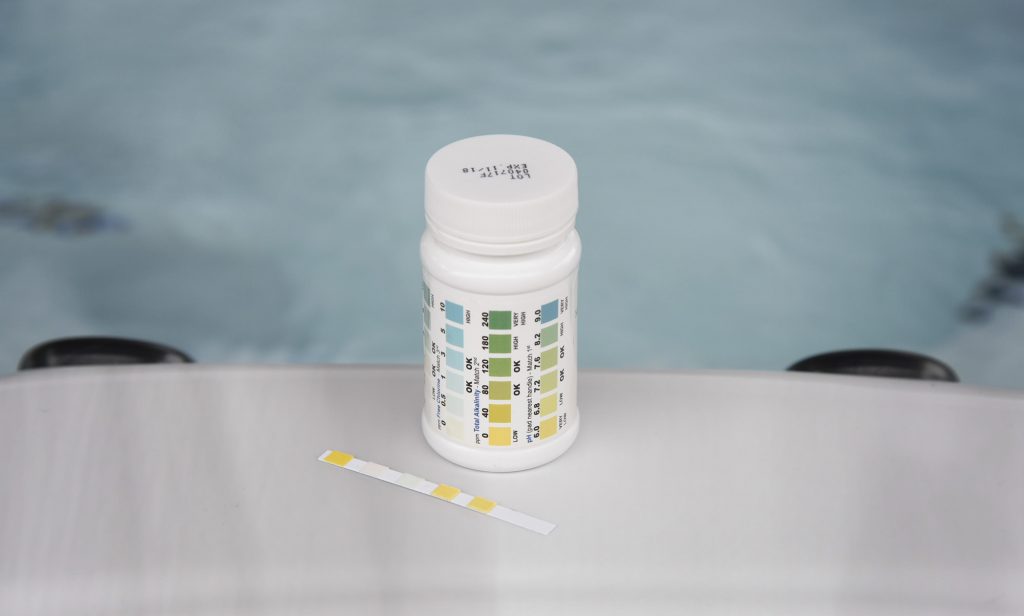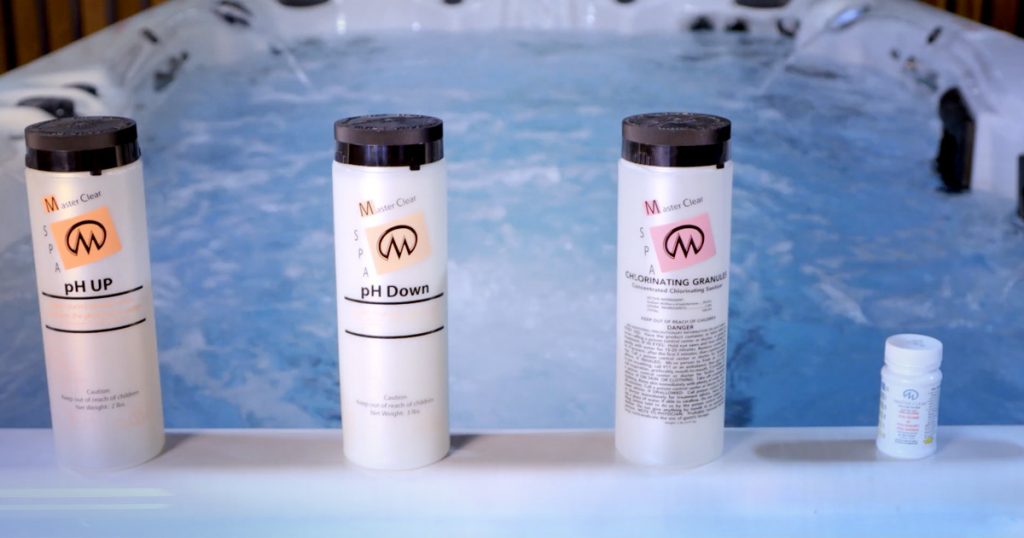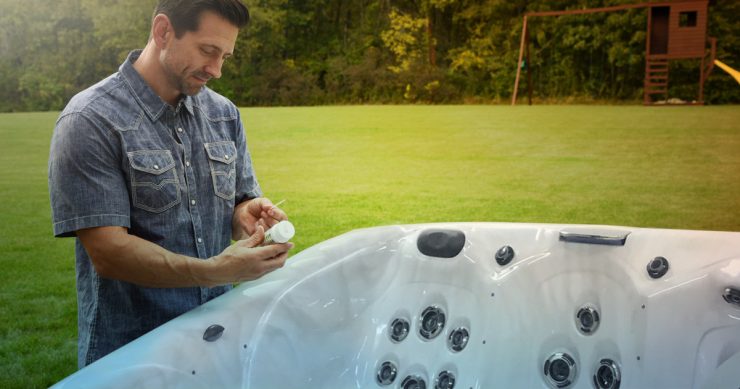Hot tubs are designed to be enjoyed, whether it’s soaking at the end of the night, or relaxing with friends on the weekend.
Regular hot tub maintenance will help ensure that your spa is clean and clear for relaxing. Master Spas owners can enjoy the added benefit of the EcoPur water management system, which purifies the water with fewer chemicals.
The EcoPur system is a mineral filtration system that uses elements like copper and zinc to keep your water clean. The ozone system of Master Spas hot tubs also helps keep water clean so your hot tub is ready when you are.
However, all owners still need to put chemicals in the water as part of regular hot tub maintenance. Even if some products are not part of regular water care, there are hot tub chemicals that you should always have at home.
What hot tub chemicals should you always have? You should have a sanitizer; a sequestering agent to remove heavy metals; and products to adjust the pH and total alkalinity.

Storing Hot Tub Chemicals
The best place to store your hot tub chemicals is in a place where you can easily access them. You’ll be less likely to keep up with water care if it feels like work to just get to the chemicals.
But there are some best practices that will keep your products effective and keep you safe and healthy.
- Choose a cabinet or container that can sit off the ground and, if possible, can be locked. Consider a waterproof cabinet with shelves that does not affect the aesthetic of your backyard design.
- Keep them cool and dry. Hot tub chemicals are made to dissolve in water so it’s important that they do not get wet or mix with other products. If your backyard gets a lot of sun or you live in a hot climate, a place like the garage could be a better option.
- Keep them in original packaging. You want to make sure that you can reference the manufacturer’s directions.
- Lock the chemicals or put them out-of-reach from children.
What Hot Tub Chemicals Do You Need?
While you don’t want to experience a hot tub water issue, it’s better to be prepared. You might have to delay your soak for 20 minutes so the hot tub chemicals can do their work. However, that’s better than skipping it or having to make an impromptu shopping trip for hot tub chemicals.
You can find the right products for your hot tub at your local Master spas retailer.
Related video: How to Balance Hot Tub Water Chemicals
Products to Adjust pH
To keep your hot tub pH in check, you should have a pH increaser and a pH decreaser. Just like as the name indicates, you will use a pH increaser if your pH is low and a pH decreaser if the level is high.
But what is pH and why should you care? It indicates how acidic or “basic” your hot tub water is. You want your water to be neutral so it is safe to soak in. Low pH can irritate the skin and damage the spa. High pH can also cause eye and skin irritation, while making the sanitizer ineffective.
Non-Chlorine Shock
A shocking agent releases oxygen into the water, which serves a similar function as chlorine. Shocking the water increases the total chlorine level above the recommended level for a brief time. The process sanitizes the water and removes the things you don’t want — like chloramines and bacteria.
Sequestering Agent
A sequestering agent helps remove calcium and heavy metals from your water. The presence of metals or minerals can cause your hot tub water to turn an unsightly hue— brown, red, orange, or green.
When to add a sequestering agent: Use a sequestering agent if your hot tub water is brown, red, orange or green. It is also important to add a sequestering agent when adding water to your tub.

Sanitizer
Germs and bacteria get into your hot tub water when people hop in the spa and from the environment. A sanitizer keeps the water balanced and safe to use. You can use either chlorine or bromine. Master Spas does recommend using sodium dichlor granules, which dissolves more quickly and sanitizes the water quickly.
Defoamer
This product will temporarily reduce foamy hot tub water. What causes foamy hot tub water? Body oils, cosmetics, lotions and other products are common culprits. Following a water care routine and showering before you get in the hot tub can help you prevent foamy water. But it can be a good idea to keep defoamer on hand, especially if you are hosting a party.
Calcium
When you are testing the chemical levels of your hot tub water, you will also check calcium hardness. This measurement will tell you how much magnesium and calcium in the water. If this is not balanced, though, your hot tub water could be foamy or cloudy. You might also notice scale build-up or, worse, damage to the metal components. Owners should keep a calcium hardness increaser and calcium hardness decreaser with their hot tub chemicals.
Fewer hot tub chemicals, more enjoyment
Hot tubs take chemicals and maintenance. However, with a quality filtration system, you can keep your water clean with fewer chemicals. Learn more about how you can reduce maintenance when you choose a Master Spas hot tub. Or, contact your local Master Spas retailer to learn more about spa ownership. Wondering how much a Master Spas costs? You can request a quote here.


